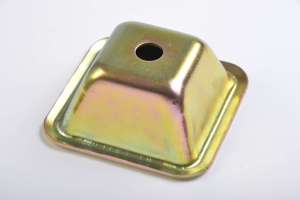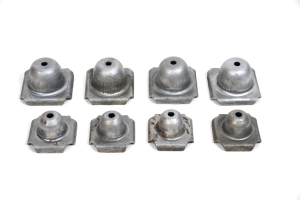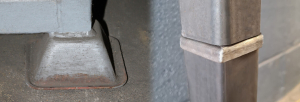What Are Nesting Plugs and Why Do Warehouses Use Them?
In the world of logistics, warehousing, and material handling, efficiency and organization are key to ensuring smooth operations. Every inch of space in a warehouse must be utilized optimally to maximize productivity, reduce costs, and maintain safety. One often-overlooked yet incredibly useful tool for achieving this is nesting plugs.
Nesting plugs are small, versatile components that serve a variety of functions in warehouses and storage systems. Though they may not be the most glamorous piece of equipment, they play a vital role in optimizing storage capacity, improving the handling of goods, and ensuring that products remain safe during transport or storage.
In this guide, we’ll explore what nesting plugs are, how they work, and why warehouses use them. We’ll also discuss the various applications of these products in different industries and how they can contribute to smarter warehouse management.
What Are Nesting Plugs?
A nesting plug is a small device designed to be inserted into the openings or hollow spaces of containers, pallets, or other storage solutions. These plugs are typically made of plastic, rubber, or metal, and their purpose is to fill gaps, prevent contaminants from entering, and ensure that stored goods remain secure during handling or transport.
The term “nesting” refers to the plug’s ability to fit into a container or pallet in such a way that it saves space and prevents shifting or movement of the contents. When multiple containers or pallets are stacked on top of each other, they provide a stable and secure base, ensuring that the weight is evenly distributed and that no unwanted debris or moisture can enter.
While the most common application of nesting plugs is in warehouse storage, they can also be found in shipping and transport systems, particularly in industries where goods are frequently stacked or stored for extended periods.

How Do Nesting Plugs Work?
Nesting plugs work by being inserted into the holes, cavities, or open spaces of containers, pallets, or racks. Once inserted, they help in several ways:
- Space Optimization: They ensure that stored goods are organized and remain in their designated spots. By filling empty spaces, these plugs help to maximize storage capacity, allowing for more goods to be stored efficiently in a smaller area.
- Preventing Shifting: In warehouses where goods are stacked or stored for long periods, nesting plugs ensure that items do not shift during transit or handling. This reduces the risk of product damage and ensures stability in the storage system.
- Contamination Prevention: By sealing off open spaces, nesting plugs prevent dust, moisture, and other contaminants from entering the container or pallet. This is particularly important in industries like food, pharmaceuticals, and electronics, where product hygiene and quality are critical.
- Improving Handling: Nesting plugs can also make it easier to handle and stack pallets or containers. They provide a smooth and stable surface for stacking, ensuring that the weight is evenly distributed and reducing the risk of the stack collapsing.
- Enhanced Safety: By preventing contents from moving around or spilling, nesting plugs contribute to a safer work environment. They ensure that goods remain securely in place, reducing the risk of accidents and injuries.
Why Do Warehouses Use Nesting Plugs?
Now that we understand the functions of nesting plugs, let’s explore why they are so commonly used in warehouses and logistics operations.
Maximizing Warehouse Space
Warehouses, especially those with limited space, need to ensure that every inch is used effectively. Nesting plugs help maximize storage capacity by preventing wasted space between stacked pallets or containers. By securing goods in place and optimizing the stacking process, they contribute to better space utilization and more efficient warehouse layouts. In high-density storage systems, such as automated storage and retrieval systems (AS/RS), every bit of space matters. They allow for tighter stacking without compromising the safety or integrity of the stored goods.
Reducing Product Damage
The movement of goods during storage and transit can lead to damage, especially in fragile items. When pallets or containers are not securely packed, products can shift, fall, or become dislodged, resulting in costly damage and delays.
Nesting plugs prevent this by providing a stable base and securing the items inside the container or pallet. They absorb shock, reduce movement, and ensure that the goods are protected throughout the handling and storage process.
Improving Efficiency in Operations
Warehouses rely on fast, efficient operations to keep products moving in and out quickly. By securing pallets and containers, nesting plugs help streamline the loading and unloading process. Goods are stored more efficiently, and there’s less time spent organizing or fixing damaged items.
The added stability makes it easier for forklifts, automated systems, and warehouse workers to handle pallets. They can quickly and safely stack, retrieve, or move products without worrying about shifting or instability.
Enhancing Product Hygiene
For industries that deal with perishable goods or sensitive products, such as food, pharmaceuticals, and electronics, hygiene is critical. Nesting plugs help to seal off containers, preventing contaminants like dust, dirt, moisture, and insects from entering. This helps maintain the integrity of the product and ensures that it stays in optimal condition during storage.
Moreover, nesting plugs are easy to clean and replace, ensuring that the warehouse maintains a high standard of hygiene without the need for expensive or time-consuming cleaning procedures.
Reducing Operational Costs
Nesting plugs can contribute to cost savings in several ways. First, by optimizing storage space, warehouses can reduce the need for additional storage space or costly storage systems. Second, they help prevent damage to products, reducing the need for replacements or returns. Additionally, because they can improve the efficiency of the warehouse and reduce downtime caused by product damage or reorganization, they contribute to overall operational cost savings.

Applications of Nesting Plugs in Warehouses
Nesting plugs are used in a wide variety of warehouse applications across different industries. Here are some common examples:
Pallet Storage Systems
In warehouses where pallets are stacked on top of each other, nesting plugs are used to ensure that the pallets stay in place and that the load is evenly distributed. This is particularly important in high-density pallet racking systems, where space is limited, and stability is essential.
Shipping Containers
Nesting plugs are used in shipping containers to secure items during transport. They help fill gaps between products, preventing shifting during transit and ensuring that goods arrive safely at their destination.
Food Storage
In food warehouses, especially those dealing with perishable goods, nesting plugs are used to seal off containers and prevent contamination. They help maintain hygiene and ensure that products are stored at the correct temperature without being exposed to external elements.
Pharmaceutical Warehouses
In pharmaceutical warehouses, nesting plugs play a crucial role in maintaining the integrity of products. They help ensure that medications and medical supplies are stored in clean, secure environments, free from contaminants.
Electronics and High-Value Goods
Nesting plugs are often used in warehouses dealing with electronics and other high-value items. These plugs help prevent static, moisture, and physical damage, ensuring that sensitive products remain safe and intact during storage and handling.

How to Choose the Right Nesting Plug for Your Warehouse
Choosing the right nesting plug for your warehouse depends on several factors, including the type of goods being stored, the storage environment, and the material of the pallets or containers. Here are some tips for selecting the best nesting plugs:</p>
- Material Compatibility: Make sure the plugs are made from a material that is compatible with the pallets, containers, and products being stored. For example, rubber and plastic plugs are ideal for lightweight or fragile products, while metal plugs may be needed for heavier loads.
- Size and Fit: Choose nesting plugs that fit the specific dimensions of your pallets or containers. A well-fitting plug will provide better stability and support.
- Durability: Look for nesting plugs that are durable and able to withstand the weight and pressure of stacked pallets or containers. This ensures that they will remain effective for long periods.
- Environmental Conditions: Consider the environmental conditions in your warehouse. For example, if your warehouse is subject to high humidity, you may want to opt for moisture-resistant nesting plugs to prevent rust and degradation.
Also, check out the detailed guide on how to choose a warehouse racking system.
Conclusion
Nesting plugs may seem like a small, simple component, but they are incredibly effective tools for improving warehouse storage, efficiency, and safety. By preventing product damage, optimizing space, and enhancing the overall organization of your warehouse, nesting plugs are essential for warehouses that handle large volumes of goods, especially in industries like food, pharmaceuticals, and electronics.
By understanding how nesting plugs work and their various applications, warehouse managers can make better decisions about how to improve storage systems and reduce operational costs. Whether you’re looking to increase space utilization, prevent contamination, or improve product handling, these plugs offer a cost-effective and reliable solution for smarter warehouse management.
Kirmel Products: High-Quality Nesting Plugs for Warehouse Efficiency
When it comes to optimizing warehouse storage, Kirmell Ltd offers a range of high-quality nesting plugs designed to meet the diverse needs of various industries. Whether you’re dealing with fragile electronics, food products, or heavy machinery, Kirmell Ltd’s nesting plugs provide reliable and long-lasting performance to ensure that your products are stored securely and efficiently.
With options for different materials, sizes, and load capacities, Kirmell Ltd offers the right nesting plugs to suit your specific warehouse storage requirements. Their products help enhance organization, maximize space, and protect your goods, contributing to smarter warehouse management.
FAQs
What are these nesting plugs used for in warehouse storage?
How do they benefit warehouse operations?
Are these plugs universal for all pallets?
Do these plugs improve safety in the warehouse?
Can these plugs be used multiple times?
Will these plugs affect pallet handling?




Leave a Reply
Want to join the discussion?Feel free to contribute!